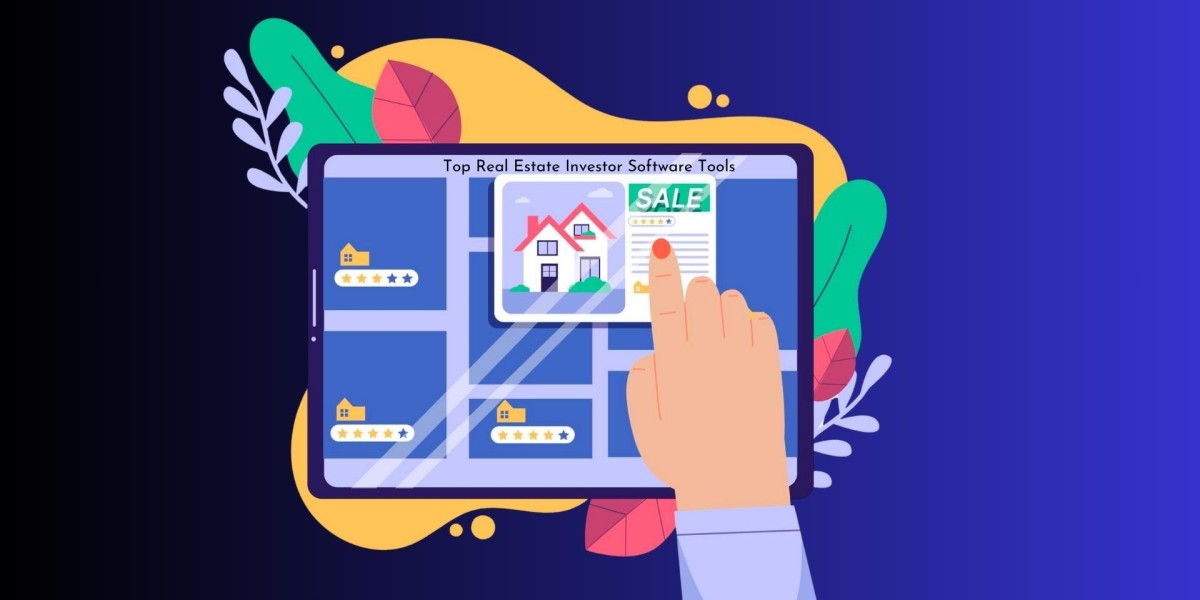Why Smart Investors Use Smart Tools
Property investment rewards clear thinking and fast action. The challenge is volume: listings to screen, yields to model, tenants to manage, and lenders to update. The right tools bring order to that noise. They speed up research, surface better deals, and keep portfolios tidy. This article walks you through what to look for, which categories of software matter most, and how to match a platform to your strategy. It’s written for UK investors across buy-to-let, HMOs, flips, and small commercial—whether you run a lean operation or manage a growing team. Expect practical guidance, plain English, and a focus on results.
What real estate investment software actually does
Think of your stack as three layers working together:
- Deal discovery and analysis: pulls market data, rental comps, yield estimates, and risk signals so that you can judge a property quickly and fairly.
- Transaction and pipeline: keeps leads, contacts, viewings, and offers in one place, so nothing slips through the cracks.
- Portfolio and operations: handles rent collection, maintenance, inspections, and reporting, so day-to-day tasks run on schedule.
Good software shortens the time from opportunity to decision. It replaces guesswork with numbers you can defend: acquisition costs, refurb budgets, gross and net yields, cash-on-cash returns, and exit scenarios. It also creates a record of truth, which is vital when lenders, partners, or accountants ask for details.
Key features to look for in property investment tools
Before you shortlist platforms, map these features against your goals:
- Accurate valuations and comparables: solid AVMs, local comps, and rental estimates reduce pricing errors and help you set realistic offers.
- Flexible calculators: quick models for yield, BRRR, flip margins, and sensitivity testing (voids, rate changes, and refurb overruns).
- Lead capture and CRM: one place for agents, sourcers, direct-to-vendor leads, and follow-ups with reminders.
- Task automation: recurring jobs for rent runs, arrears chasers, certificate renewals, and scheduled inspections.
- Maintenance workflow: log issues, assign contractors, track costs, and keep landlords or partners updated.
- Clear reporting: statement-ready cashflow, unit-level P&L, and VAT-aware exports for your accountant.
- Role-based access and audit trail: let team members do their jobs without exposing sensitive data.
- Mobile-first experience: quick notes and photos that save hours later.
- Security and reliability: regular backups, two-factor authentication, and uptime you can trust.
If you invest across regions or mix strategies, prioritise tools that adapt instead of forcing your process into a rigid template. Flexibility is often worth more than one “hero feature.”
Best software for UK real estate investors in 2025
Below are the key categories you’ll likely combine into a lean, effective stack. Include one from each, then add specialised modules as you scale. Within your portfolio and operations category, evaluate a dedicated property management system that streamlines rent, maintenance, and landlord reporting. A strong example of this category is a platform offering intuitive dashboards and automated workflows for tenancy management; many UK landlords use dedicated software for managing property to keep admin tight, minimise arrears, and improve response times. Choose a solution with clear pricing, simple setup, and UK-specific workflows so you can get value fast without retraining the whole team.
Core categories to cover:
- Deal sourcing & analysis: market data, comparables, rental estimates, and calculators to validate buy-to-let, HMO, or flip deals.
- CRM & pipeline: centralise agents, sourcers, direct leads, tasks, and offer tracking; see your next action at a glance.
- Refurb & project control: scopes of work, budgets, timeline tracking, and progress photos keep refurb risk in check.
- Property management: tenant onboarding, rent schedules, arrears automation, maintenance workflows, certificates, and reporting.
- Accounting & reporting: cashflow statements, unit-level profitability, VAT support, and export to your accountant or bookkeeper.
- Document storage & e-sign: keep ASTs, licences, IDs, and quotes searchable and signed without email ping-pong.
Selection tip: start with the single biggest bottleneck in your process—analysis, pipeline, or operations—and pick the category that removes it. Add the next tool only when you feel friction again.
Match the platform to your investment style
Different strategies have different failure points. Align your stack to the risks you actually face:
- Buy-to-let: you win on accurate rent forecasts, low voids, and smooth renewals. Prioritise strong rent automation, arrears workflows, and maintenance tracking.
- HMOs: occupancy and compliance scheduling matter. Look for multi-tenant rent rules, room-level metrics, and robust task reminders.
- Flips: speed and cost control drive margins. Choose tools with budget variance alerts, photo logs, and contractor scheduling.
- Small commercial: leases and service charges are more complex. You need configurable rent terms, index-linked uplifts, and clear service-charge reconciliation.
- Mixed portfolios: pick platforms that support both ASTs and licences, varied rent periods, and multi-entity reporting.
A simple test: could you onboard a new property, set a rent schedule, and schedule inspections within 30 minutes? If not, the tool may be too complex—or not UK-centric enough.
Integrations that speed up your day
Your stack works best when each tool hands off cleanly to the next. Look for:
- Calendar and email for viewings, reminders, and team visibility.
- Bookkeeping to export statements and reconcile faster each month.
- Payment collection to reduce arrears and automate reminders.
- Cloud file storage to keep all property documents searchable in one place.
Keep integrations tight and relevant. Fewer, well-chosen links beat a sprawl of half-used connections that break when you need them most.
Why investors feel the gains quickly
Well-implemented software starts paying back in weeks:
- Faster screening: clear comparables and calculators mean you only view strong candidates.
- Cleaner pipeline: every lead has a next action; agents get timely updates; offers go out with accurate numbers.
- Lower admin load: rent runs and reminders tick over without manual effort.
- Better tenant experience: quick responses and transparent updates reduce churn and free you from fire-fighting.
- Confidence with partners and lenders: reliable reporting and audit trails show control, not chaos.
The compounding effect is real: better decisions, fewer delays, and a calmer calendar month after month.
PropTech trends shaping 2025 decisions
You don’t need buzzwords; you need usable improvements. The trends that matter are the ones that save time or reduce risk:
- Smarter pricing models: better data blends that improve rental and resale forecasts at the postcode level.
- Automated follow-ups: pipeline nudges that keep agents and vendors talking until a deal is done.
- Context-aware dashboards: at a glance, see which properties need attention today—not a sea of charts.
- Mobile-first inspections: quick photo capture and instant task creation cut site-to-desk admin to minutes.
Adopt trends when they reduce the steps you repeat every week. Ignore the rest.
Conclusion
The best software doesn’t add noise; it removes it. Start with the job you most dislike or the task that slows you down. Choose one category to fix it. Make sure it handles UK specifics, is simple to use on mobile, and produces reports your accountant actually wants. Then add the next piece only when you feel the friction again.
When your tools reflect your process, you make clearer offers, complete faster, and manage properties without constant firefighting. That’s how professional investors create space to think—so the next good deal doesn’t slip by while you’re wrestling with spreadsheets.







